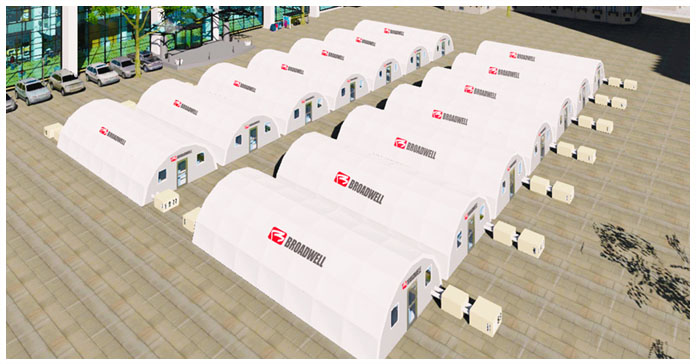News
Site Editor
 Site
/uploads/image/677267645dfcf.png
As an innovative form of agricultural production, modern domes have significantly improved the efficiency of agricultural production through their unique design and advanced technology. In terms of design and technology, the agricultural dome uses high-strength materials and transparent materials to ensure structural stability. The introduction of a management system enables precise monitoring of parameters and environmental adjustment, allowing farmers to automate more effectively manage production processes such as irrigation and fertilization. .
Site
/uploads/image/677267645dfcf.png
As an innovative form of agricultural production, modern domes have significantly improved the efficiency of agricultural production through their unique design and advanced technology. In terms of design and technology, the agricultural dome uses high-strength materials and transparent materials to ensure structural stability. The introduction of a management system enables precise monitoring of parameters and environmental adjustment, allowing farmers to automate more effectively manage production processes such as irrigation and fertilization. .
Agricultural dome design and technology
Views: 2894
Author: Site Editor
Publish Time: 2023-12-11
Origin: Site
Agricultural dome design and technology
In the evolution of modern agriculture, agricultural domes, with their unique design and advanced technology, have become the leader in improving agricultural production efficiency. First, its unique dome structure uses high-strength materials to ensure stability and long life. The shape of the dome not only protects against natural disasters, but also provides enough space for farmers to make full use of land resources.
The wide application of transparent materials is another highlight of agricultural domes. Using advanced materials such as polycarbonate, the dome achieves full sunlight transmission and provides an ideal growing environment for plants. This transparency not only promotes photosynthesis but also reduces the need for additional lighting, thereby lowering energy costs.

The technological innovation of agricultural domes is mainly reflected in the intelligent management system. Through advanced sensor technology, environmental parameters such as temperature, humidity, and light intensity can be monitored in real time. This data is analyzed through automated systems to provide farmers with precise agricultural guidance. Intelligent irrigation and fertilization systems further improve water and nutrient use efficiency and achieve the goal of sustainable agriculture.
Advantages of agricultural domes
With its unique characteristics, agricultural domes have shown many advantages in modern agriculture and brought new possibilities to agricultural production. First of all, it can achieve year-round supply, overcoming the seasonal and climate limitations of traditional agriculture. This not only helps ensure a stable supply of agricultural products, but also meets the demand for various agricultural products in different seasons.
Secondly, agricultural domes show significant advantages in urban farming and vertical farming. Due to their three-dimensional design and efficient use of space, agricultural domes make efficient farming possible in urban environments. This provides a viable solution to the growing urban population and rising demand for fresh produce.
The agricultural dome's ecological and organic farming applications are also one of its significant advantages. The use of transparent materials provides natural lighting, combined with the precise control of intelligent management systems, making the application of chemical pesticide-free and organic soil more feasible. This not only improves the quality of agricultural products, but also reduces environmental pollution.
Most importantly, agricultural domes offer huge advantages in enabling precision agriculture. The application of sensor technology and the support of intelligent management systems enable farmers to accurately understand the growth needs of plants and achieve precise irrigation, fertilization, and light control, thereby maximizing agricultural production efficiency.
Application areas of agricultural domes
As a multi-functional agricultural production system, agricultural domes are widely used in different types of agricultural production, providing an efficient and controllable production environment for planting and breeding industries. One of the main areas of application is vegetable cultivation. Due to its year-round supply characteristics and the support of its intelligent management system, the Agricultural Dome can achieve high-yield and high-quality production of vegetable cultivation and meet the market's continued demand for fresh vegetables.
Secondly, the Agricultural Dome excels in fruit cultivation. The transparent material ensures sufficient sunlight transmission and creates an ideal growing environment, allowing the fruit to mature in a shorter time and increasing yield. This is important in providing a stable supply of fresh fruit.
Flower cultivation is also one of the important application areas of agricultural greenhouses. The transparent structure provides good light for flowers, and the intelligent management system can ensure appropriate temperature and humidity, thereby cultivating more colorful and healthy flower products.












